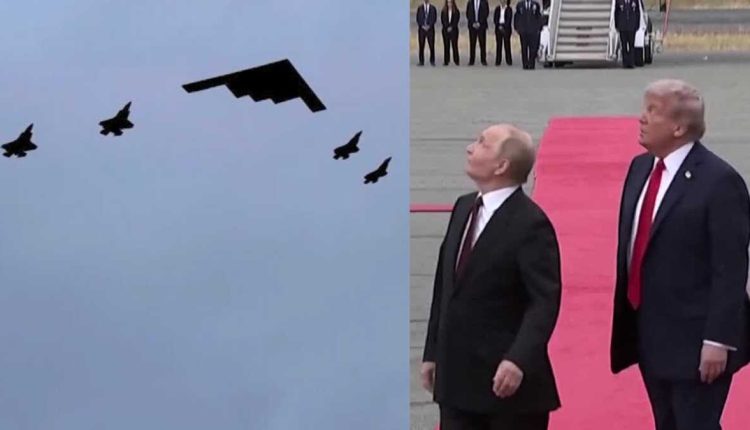Anchorage. Fighter jets cut across the horizon. Vladimir Putin steps onto the tarmac with his usual poker face while Donald Trump greets him with a wave that feels half show and half challenge. Every camera clicks. Every movement is dissected. This is not just a diplomatic exchange. It is a global performance. The first handshake sets the tone for how history will frame both men.
The trigger was the Alaska summit held on 15 August 2025. It was their first face-to-face meeting in years and the first hosted on American soil at a military base in nearly two decades. Trump positioned it as a bold step toward ending the war in Ukraine. The stagecraft was deliberate. A red carpet rolled out. A B-2 bomber flew overhead. It was a moment designed to look powerful. Yet the result was underwhelming. After hours of talks there was no ceasefire, no deal, and no breakthrough. What remained were images, soundbites, and the appearance of progress without substance.
The impact was immediate. Ukraine was struck during the meeting itself. Putin’s delegation left with its demands intact, including recognition of Russian control over the Donbas and Ukraine’s abandonment of NATO ambitions. Trump spoke of “good progress” while Putin called the negotiations “useful”. The words were diplomatic but empty. European allies reacted sharply. They accused Trump of handing Putin a propaganda victory. Ukrainian officials expressed frustration. They saw the summit as stage-managed theatre rather than genuine diplomacy.
And the financial reality pierced through the spectacle when reports revealed that Putin’s delegation had to pay cash for aviation fuel in Alaska due to ongoing sanctions. It was a vivid reminder that no amount of choreography can erase structural constraints.
The contradictions were glaring. Trump promised tough pressure yet offered ceremony instead of substance. He sought to appear commanding but left looking reactive. Putin, by contrast, played the long game. He was calm, deliberate, and unshaken. Body language experts pointed out that Trump’s final handshake revealed fatigue and disengagement while Putin maintained composure, even a hint of amusement. The optics Trump had tried to control slipped from his grasp. They reinforced the impression that Russia’s leader was setting the terms.
For Europe the meeting rang alarm bells. Leaders insisted that Ukraine must not be forced into concessions. Public opinion in Ukraine hardened against any outcome that looked like capitulation. The credibility gap widened.
History adds weight to the analysis. In 2018 in Helsinki, Trump stood beside Putin and questioned U.S. intelligence over Russian election interference. That episode sparked outrage at home and abroad. Alaska in 2025 carried the same thread. A spectacle designed to project strength instead exposed vulnerability. Once again optics outran strategy.
Then came the unexpected twist. A retired Alaskan fire inspector gave an interview about the summit that went viral in Russian media. Putin’s delegation gifted him a Ural motorcycle worth thousands of dollars.
The bizarre episode injected irony into the moment. While leaders failed to achieve a ceasefire, a local citizen walked away with the most tangible prize. It showed how narrative control can slip into unintended directions. It also showed how PR outcomes often turn on small, unpredictable moments.
The larger consequence is clear. When autonomy is traded for theatrics the cost is strategic weakness. Money can pay for jets, carpets, and ceremonies but it cannot buy trust. Power built on spectacle alone cannot endure. For public relations professionals the lesson is undeniable. Optics matter, but substance sustains credibility. Influence without alignment collapses. Alliances built without trust are fragile. In global diplomacy as in brand building, performance without delivery is exposure rather than strength.

